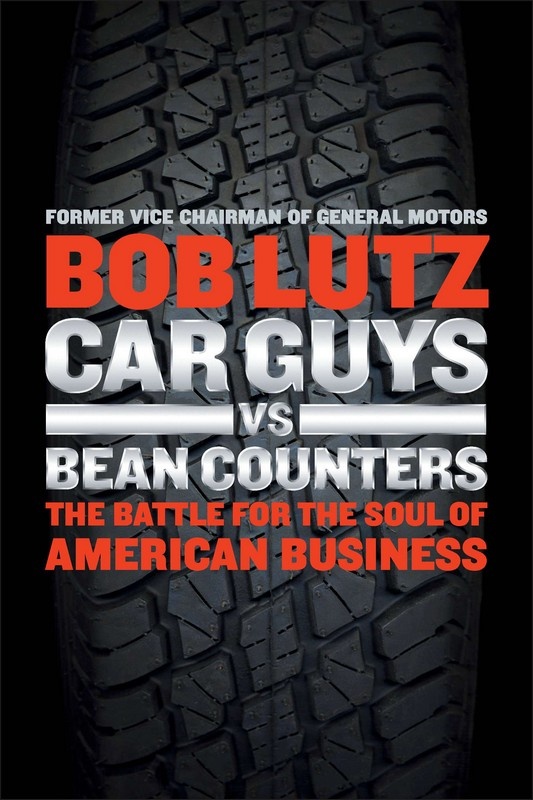 Car Guys vs. Bean Counters. Click image to enlarge |
By Paul Williams
Those who don’t know of Bob Lutz have an excellent opportunity to remedy that by reading his latest book, Car Guys vs Bean Counters: the Battle for the Soul of American Business.
I know, the title sounds a little dry, but Mr. Lutz is certainly not that (unless you count his sense of humour…). If you’re at all interested in the automobile industry and its recent travails, especially in the US, you’ll find this book entertaining, informative and maybe surprising.
But first, about the author: Bob Lutz, born in 1932, is a former Marine Corps Reserve fighter pilot and senior business executive with General Motors, BMW, Ford and Chrysler. He is a self-described “left brain, creative type;” characteristics that may not endear themselves to those with a more conventionally administrative bent. Nonetheless, his approach to management and his understanding of the automobile industry and its market was appreciated enough to place him at the highest levels in both the U.S. and Europe throughout his career.
Although Mr. Lutz touches on his experiences in management at the four automotive companies for which he worked, Car Guys vs Bean Counters focuses mainly on his last major assignment with General Motors as Vice Chairman, Global Product Development, which took him out of retirement and lasted through GM’s bankruptcy in 2009 and ended in 2010. It’s an interesting bookend to a long career in the automobile sector, as GM was his first employer in the early 1960’s after receiving his MBA from the University of California, Berkeley.
Mr. Lutz makes many interesting observations about GM — praising its dedicated executives and talented engineers and designers, but lamenting its propensity for rigid, bureaucratic thinking and “scientific” management: the reign of the Bean Counters, as it were.
What he describes is an ossification of organizational structure that over the years made GM slow to react, unable to predict market direction, overly concerned with pleasing everyone while obsessed with reducing the cost of component parts (read “cheap”).
And the design for which GM was famous in the 1950s and 1960s? Bureaucratized, compartmentalized, departmentalized and ultimately minimized. In other words, it sounds like the popular perception of government: large, formal, good at meeting, planning, studying and reporting; poor at visualizing, anticipating, creating and actually getting things done. And when it does get things done…
…Hello Pontiac Aztec; a kind of freakish amalgam of functionality and lumpy design that, according to the author, personified GMs disconnect with (and disdain for) its market. Sadly, Lutz says, Pontiac was getting its act together post-Aztec, with exciting products like the G8 and the Solstice and more to come (Mr. Lutz was the prime mover behind these cars). But Pontiac was a casualty of the restructured GM post-bankruptcy.









